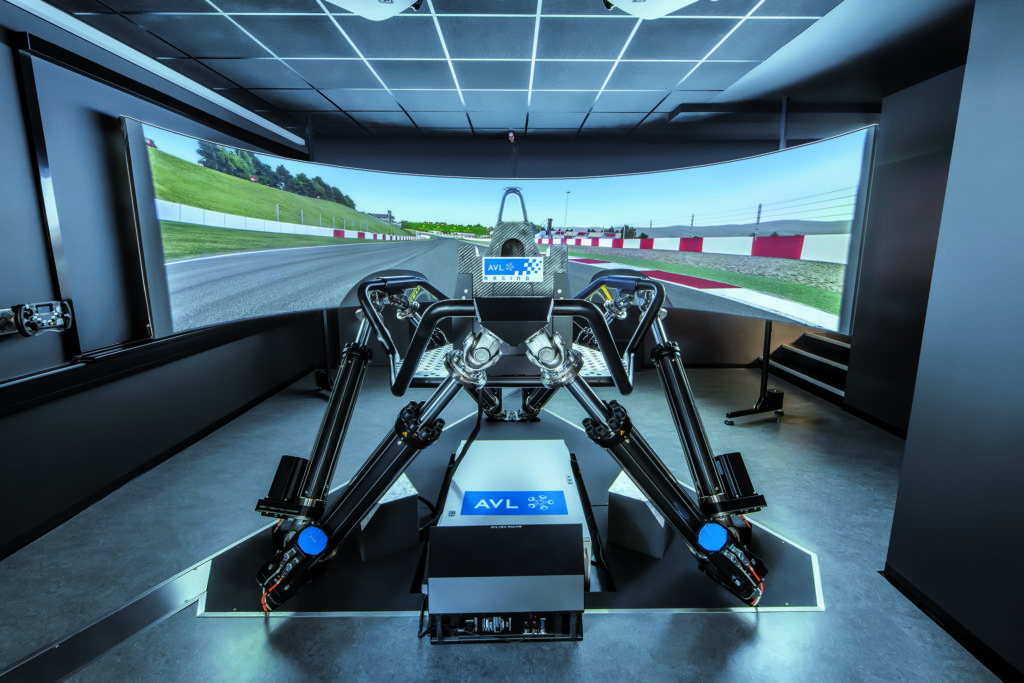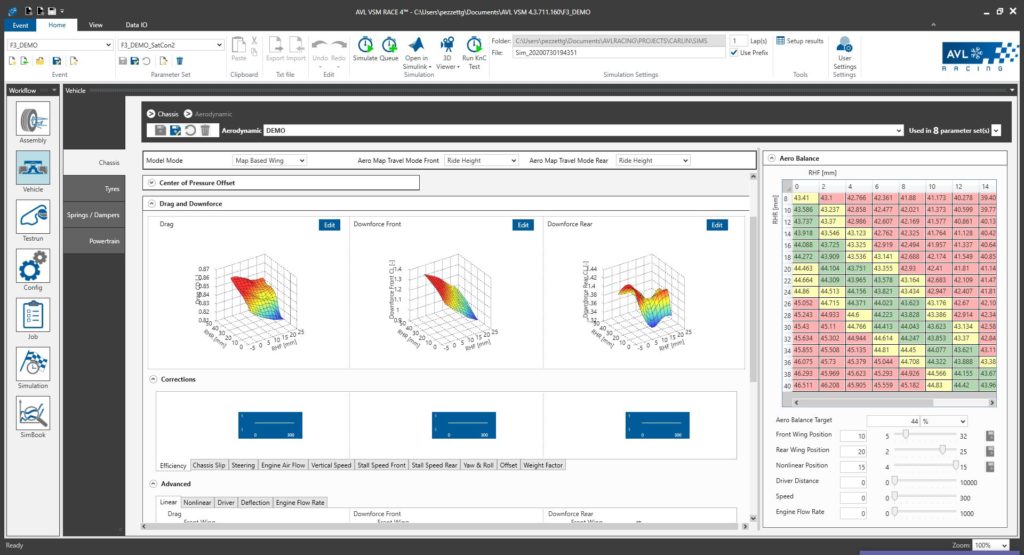In motorsports, both humans and vehicles keep pushing the limits. The goal: more performance in less time of training known as rate of development. Know-Center and AVL RACING recently joint forces in order to develop an algorithm to improve the current control-based dynamics driver model within the well stablished vehicle dynamic simulation tool AVL VSM™ RACE. Automation would allow race car manufacturers and race teams the simulation of different cars and configurations with a new driver model capable of handling the car like racing professional drivers in the vehicle. This would save a lot of cost and effort plus increasing the correlation and precision of simulation results.

AVL Racing Simulator © AVL
Racing simulator: human vs. machine
In the recently published study, “Comparing Driving Behavior of Humans and Autonomous Driving in a Professional Racing Simulator,” researchers compared human driving behavior and the behavior of drivers in autonomous vehicles based on an aggressive racing scenario. In order to accomplish this, they used a vehicle dynamics simulation software called AVL VSM™ RACE , which model the physics of the vehicle and the environment like the racetrack and provides the necessary telemetry data.

Screenshot of AVL VSM™ RACE ©AVL
Machine learning as a basis
By using machine learning, specifically the Deep Reinforcement Learning (DRL) method, data was collected and labeled during the racing simulator training runs. “Our team trained by using a state-of-the-art DRL algorithm that controls the brake, throttle, and steering of the racing simulator. Features that are used to predict driving performance in humans can also be used in autonomous driving. Based on the vehicle dynamics simulation data, we were able to derive models that reflects which influences have particular impact on performance,” says Prof. Dr. Eduardo Veas, Research Area Manager at the Know-Center area Knowledge Visualization and leader of the project.
Together with AVL RACING, they are already working on follow-up projects that will analyze human driving behavior using sensors such as EEG and heart rate, among other things.